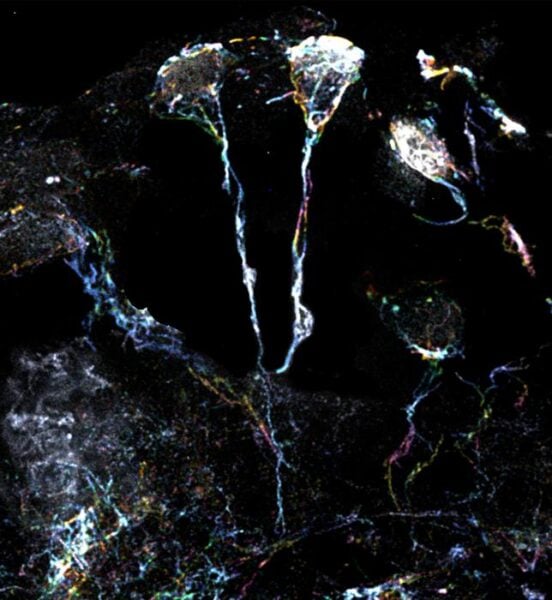Researchers have uncovered a way to wake up dormant neural stem cells in the brain, potentially opening new avenues for treating neurodevelopmental disorders such as autism, learning disabilities, and cerebral palsy. This discovery, made by scientists from Duke-NUS Medical School and the Mechanobiology Institute at the National University of Singapore, sheds light on the intricate processes behind brain development and repair.
Unlocking the Potential of Sleeping Brain Cells
Neural stem cells, the brain’s raw material for creating new neurons, typically lie dormant in adult brains until they receive specific activation signals. When awakened, these cells can produce new brain cells, aiding in repair and growth. However, problems with this activation process are linked to cognitive decline in aging and various neurodevelopmental disorders.
The research team, led by Professor Wang Hongyan, Acting Program Director of Duke-NUS’ Neuroscience & Behavioural Disorders Research Programme, chose to study this activation process in fruit flies. Despite their small size, fruit flies share similarities with mammals in how their neural stem cells remain dormant until activated.
Using cutting-edge super-resolution microscopy, the scientists examined tiny fiber structures in dormant neural stem cells of fruit flies. These structures, about 20 times smaller than a human hair, are rich in protein filaments called actin. The team discovered that a specific protein, Formin, can activate these filaments and cause them to assemble.
Dr. Lin Kun Yang, the study’s first author, explained the significance of this pathway: “We decided to home in on this pathway as variants in Formin levels are associated with neurodevelopmental disorders like microcephaly in humans. Understanding this pathway could provide new insights into developing solutions to treat neurodevelopmental disorders.”
Astrocytes: The Key to Waking Sleeping Stem Cells
The study, published in Science Advances, revealed a surprising role for astrocytes – a type of glial cell previously thought to mainly provide structural and nutritional support in the brain. The researchers found that astrocytes release a signaling protein called Folded gastrulation (Fog), which triggers a chain reaction leading to the activation of neural stem cells.
This process involves the activation of a receptor protein called GPCR in neural stem cells, which responds to the Fog protein secreted by astrocytes. This interaction sets off a signaling pathway that controls the formation of actin filaments in neural stem cells, ultimately rousing them from their dormant state.
The discovery of GPCR’s role is particularly exciting because this protein family is already a major target for many FDA-approved drugs. In fact, 34% of FDA-approved drugs target this family of proteins. This opens up the possibility of repurposing existing medications to treat neurodevelopmental disorders by influencing neural stem cell behavior.
Professor Wang Hongyan emphasized the importance of their findings: “Our findings add new knowledge to the limited body of research on mechanisms governing the reactivation of dormant neural stem cells. With our discovery of astrocytes as a key player in the reactivation of neural stem cells, we now have a new way to influence neural stem cell behaviour.”
Why it matters: This research is crucial because neurodevelopmental disorders affect approximately 5% of children and adolescents worldwide, leading to impaired cognition, communication, adaptive behavior, and psychomotor skills. By uncovering new mechanisms to activate dormant neural stem cells, this study offers hope for developing more effective treatments for these disorders, potentially improving the lives of millions of people globally.
The implications of this research extend beyond neurodevelopmental disorders. As Professor Patrick Tan, Senior Vice-Dean for Research at Duke-NUS, pointed out, “This not only advances our fundamental understanding of how astrocytes influence brain cell development but also opens new avenues for advancing therapies for neurological disorders, brain ageing and injury.”
Looking ahead, the research team plans to investigate other signals from astrocytes that might influence neural stem cell activity. They also aim to explore whether similar mechanisms are at play in human brain development. This ongoing research could lead to breakthrough treatments for a wide range of neurological conditions, offering new hope to patients and their families.
If our reporting has informed or inspired you, please consider making a donation. Every contribution, no matter the size, empowers us to continue delivering accurate, engaging, and trustworthy science and medical news. Independent journalism requires time, effort, and resources—your support ensures we can keep uncovering the stories that matter most to you.
Join us in making knowledge accessible and impactful. Thank you for standing with us!

